The ASCO Post remembers the following members of the oncology community who passed away in 2018–2019. Please write to editor@ASCOPost.com to recognize others and pay tribute in a future issue.
Sydney Brenner, MSc, MBBCh, DPhil
Sydney Brenner, MSc, MBBCh, DPhil, died on April 6, 2019, at age 92, according to The Agency for Science, Technology and Research (A*STAR) in Singapore, where Dr. Brenner had served as a Senior Fellow. Dr. Brenner was conferred the Nobel Prize in Physiology or Medicine in 2002 for his pioneering work in the field of molecular biology. For over 6 decades, he had shaped modern biology and understanding of the genetic code.
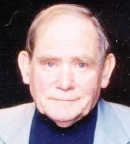
Sydney Brenner, MSc, MBBCh, DPhil
Dr. Sydney Brenner was a renowned pioneer in molecular biology. His many achievements included deciphering how the triplet codon works, the discovery of messenger RNA, and the use of the worm Caenorhabditis elegans as a model system for human disease. Dr. Brenner’s dedication and commitment to Singapore have also contributed to policies and initiatives that have left an indelible mark on the nation’s research and development journey.
Since his first visit in 1983, Dr. Brenner had played a key role in building the biomedical sciences in Singapore. He challenged the nation to think ahead for the future, which led to the establishment of Singapore’s first major research institute for science, the Institute of Molecular and Cell Biology in 1985.
Over the past 35 years, Dr. Brenner guided Singapore on its journey into research and development, including his recent capacity as Scientific Advisor to former Chairman A*STAR Lim Chuan Poh. For his contributions, Dr. Brenner received many accolades, including the Distinguished Friends of Singapore in 2000, Honorary Citizen in 2003, and the National Science and Technology Medal in 2006.
A*STAR Chairman, Chan Lai Fung, said: “A giant in the field of molecular biology, Sydney played a key role in shaping Singapore’s research and development landscape from its early years. His deep contributions in biomedical sciences have helped put Singapore on the global map. Today, Singapore is an emerging biomedical hub. Sydney will be remembered by the scientific community and beyond.”
Dr. Brenner had a strong passion in ensuring that young people receive a good education in science. Through his support, the A*STAR Graduate Academy was established to help Singapore build its own pipeline of young scientists and engineers, many of whom now contribute in research institutes, universities, polytechnics, hospitals, and local companies.
This past November, a book entitled 10-on-10: The Chronicles of Evolution was launched as a tribute to Dr. Brenner’s extraordinary vision and legacy. The book was written by 24 renowned scientists and is a compilation of a series of lectures on evolution, which was the brainchild of Dr. Brenner.
Bertrand Coiffier, MD, PhD
Internationally renowned lymphoma expert Bertrand Coiffier, MD, PhD, died on January 2, 2019. He was 71. Dr. Coiffier published more than 500 papers and book chapters that garnered more than 50,000 literature citations, placing him among the top 1% of the most influential researchers globally. His work directly affected the progress made over the past 40 years in lymphoma treatment, and his tireless research efforts have led to practice-changing therapies that have saved countless lives.
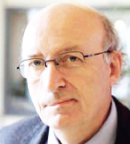
Bertrand Coiffier, MD, PhD
In a landmark study published in TheNew England Journal of Medicine in 2002, Dr. Coiffier was the first to describe the synergy of the anti-CD20 antibody rituximab with the CHOP regimen (cyclophosphamide, doxorubicin, vincristine, prednisone) in diffuse large B-cell lymphoma. He was also behind numerous drug approvals worldwide, helping establish novel treatment options for patients with lymphoma.
Dr. Coiffier was born on March 26, 1947. He earned his MD and PhD degrees at the University of Lyon, France, where he was also certified in hematology and medical oncology before he became Professor of Hematology in 1989.
From the beginning of his career, Dr. Coiffier dedicated himself to developing novel clinical research protocols at the Centre Hospitalier Lyon, as well as in the national and international arena. These projects began in 1984 with the creation of the Adult Lymphoma Study Group (GELA).
As a visionary who understood the need for scrupulous scientific methodology, he paid attention to the quality of clinical data, the rigor of statistical analysis, and the need for translational research based on major clinical trials. From the LNH-80 protocol (the ACVBP regimen [doxorubicin, cyclophosphamide, vindesine, bleomycin, prednisone] still used today by some centers) to the combination of the anti-CD20 antibody rituximab with CHOP, his work would pave the way for the immunochemotherapy combinations to revolutionize the treatment of lymphomas.
Dr. Coiffier spearheaded numerous international collaborations and played a leading role in the creation of international prognostic indices in different types of lymphoma, identifying groups of patients with similar prognoses but distinct medical needs. These achievements earned him international recognition, which enhanced the research capabilities of his colleagues at the Centre Hospitalier Lyon as well as the entire GELA group.
Dr. Coiffier was the founding Chair of the Lymphoma Hub, a nonprofit organization based in Thames Ditton, England. He had also recently created and served as President of the European Lymphoma Institute, a working party for lymphoproliferative disorders. He was a Lymphoma Medical Representative of the Working Committee of the Lymphoma Coalition, Senior Board Member of Healthology, and former Editor-in-Chief of the journal Leukemia Research.
In 2008, Dr. Coiffier was awarded the Kaplan Lecture and San Salvatore Prize in Lugano. In 2011, he was the winner of the John Ultmann Award for outstanding contributions to the treatment of lymphoma.
Gilles Salles, MD, PhD, Head of the Hematology Department of the South Lyon Hospital Complex in France, told The ASCO Post:
Widely invested with his patients, endowed with an exceptional power of work, and demanding toward himself, Bertrand was also a faithful friend for us, of great humility and an exemplary simplicity in his human, professional, and social relations. His determination, courage, and lucidity in the years of his illness force our admiration. We are losing a visionary colleague and a friend, and we share our grief with those who worked with him, his attentive wife Christiane, and his children and grandchildren. And we will strive to continue on the path he traced.
Peter Mollee, MD, Associate Professor, University of Queensland Medical School, Australia, and Chair of the Scientific Advisory Committee of the Australasian Leukaemia & Lymphoma Group (ALLG), noted:
Professor Coiffier’s association with the ALLG goes back to 1999, when he visited Australia and gave a truly memorable dinner presentation at a St. -Kilda restaurant as part of the ALLG Scientific Meeting. At that time, rituximab was a relative newcomer on the lymphoma agenda, and he provided us with inspiring information about this new treatment modality. Professor Coiffier was a personal friend to numerous Australian and New Zealand hematologists, and he warmly welcomed many to work under his mentorship at the University of Lyon, where he continued to foster a drive for research excellence. He will be fondly remembered and sadly missed by the global hematology community.
James D. Cox, MD
The acclaimed radiation oncologist James D. Cox, MD, led MD Anderson’s Proton Therapy Center, an international center of excellence for proton therapy, research, and education, distinguished as the world’s first proton therapy facility located within a comprehensive cancer center. At the 2017 National Proton Conference, Dr. Cox was recognized with a lifetime achievement award for his innovative contributions to the advancements in the field of proton therapy. Dr. Cox died on August 14, 2018, a month after celebrating his 80th birthday.
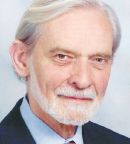
James D. Cox, MD
Dr. Cox was born in Steubenville, Ohio, and grew up in Dayton, Ohio. He excelled in high school, both academically and on the gridiron. After graduating high school, Dr. Cox entered Kenyon College in Gambier, Ohio, also playing on the school’s football team; he loved football and remained a lifelong enthusiast.
Although Dr. Cox developed a love of science early and majored in biology and chemistry at Kenyon, he had not decided to pursue a career in medicine until his junior year, when serendipity intervened. A professor of physiology from the University of Rochester came through Kenyon as a guest lecturer. He was also recruiting for the physiology laboratories at Rochester. He offered Dr. Cox an 8-week summer fellowship at the University of Rochester; during this fellowship, Dr. Cox decided to become a doctor. After graduating magna cum laude from Kenyon College, he went to the University of Rochester Medical School, where he met his first wife, Christa.
Dr. Cox’s road to oncology began in his second year of medical school in a pathology course. While studying cancer cells, he became fascinated by the disease and the career possibilities. It wasn’t uncommon for medical students at the University of Rochester to take a year off for research, so Dr. Cox followed his burgeoning interest in cancer to pursue a clinical research fellowship project at the Penrose Cancer Center in 1963, where the pioneering radiation oncologist Juan del Regato, MD, took him under his wing, an experience that had a profound effect on Dr. Cox’s career.
After his fellowship at Penrose, Dr. Cox was offered a fellowship at the Institut Gustave Roussy in Paris, one of the world’s leading cancer research institutes and the premier European cancer center. It proved not only a valuable experience for his career, but his time in Paris formed an abiding passion for France, medieval history, and wine.
Dr. Cox served in the U.S. Army at Walter Reed Hospital before beginning his academic career at Georgetown University. In 1973, he was appointed Founding Director of the Cancer Center at the Medical College of Wisconsin, where he met his second wife, radiation oncologist Ritsuko Komaki, MD.
Another opportunity knocked, and Dr. Cox accepted an offer to chair the Department of Radiation Oncology at Columbia Presbyterian Hospital. Things did not go as planned at Columbia, and a year into his tenure he was recruited to MD Anderson Cancer Center in 1988 as Professor of Radiation Oncology, Physician-in-Chief, and Vice President of Patient Care, a position he held until 1992. From 1995 until his retirement in 2014, he served as Head of the Division and Chairman of Radiation Oncology. Shortly after his arrival at MD Anderson, Dr. Cox led the launch of the Proton Therapy Center, which opened in 2006.
Dr. Cox was a lover of life and traveled widely for work and pleasure, with his favorite destinations being France and Japan. He is survived by his wife, two children and five grandchildren.
During an interview at an American Society for Radiation Oncology meeting, Dr. Cox was asked to summarize his greatest career satisfaction: “It has come from leading the division of radiation oncology for 15 years and helping it to become what it is today. The faculty, residents, collaborations with other departments and institutions [have] been fun and rewarding. The rapid technologic advances and the way they help our patients [are] truly gratifying, with protons being one of the most recent ones. We are only at the beginning of wedding these advances with molecular targeted agents, so there is much excitement in the future. I’m proud to be part of it.”
Philip J. DiSaia, MD
The grandson of Italian immigrants, Philip J. DiSaia, MD, was born on August 14, 1937, in Providence, Rhode Island. He earned his Bachelor’s in Science at Brown University and his MD at Tufts University. Upon the advice of his mentor in medical school, Dr. DiSaia obtained 2 years of general surgery training, followed by a residency in obstetrics and gynecology at Yale University, where he met Edward J. Quilligan, MD, creator of the fetal heart rate monitor.
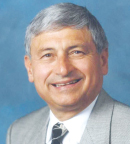
Philip J. DiSaia, MD
During his residency, Dr. DiSaia published the paper that first brought to light the teratogenic effects of warfarin on the human fetus. He next fulfilled his commitment to serve in the U.S. Navy and then successfully competed for a grant through the American Cancer Society, which funded his fellowship in gynecologic oncology under the tutelage of Felix Noah Rutledge, MD, at MD Anderson Hospital and Tumor Institute in Houston. During this period, he would form long-lasting bonds with his co-fellow, Dr. William T. Creasman.
In 1976, Dr. DiSaia was recruited following a national search for a Chair for the Department of Obstetrics & Gynecology at the University of California (UC), Irvine. Accompanied by Dr. Quilligan, Dr. DiSaia sought to establish a traditional academic department at UC Irvine and would ultimately distinguish the Department of Obstetrics & Gynecology as one of the preeminent institutions dedicated to women’s health.
In addition to a nationally recognized residency program and robust volunteer clinical faculty comprising community obstetricians/gynecologists, the department flourished under his leadership with the establishment of four clinically directed and research-driven divisions in Gynecologic Oncology, Maternal-Fetal Medicine, Reproductive Endocrinology and Infertility, and Urogynecology. Embedded in each division was a highly sought after fellowship training program. Dr. DiSaia established the first 4-year program in gynecologic oncology, created a direct corridor for translational research collaboration with the basic scientists in UC Irvine’s School of Biological Sciences, and was the first to obtain National Institute of Health funding through a T32 grant to fund the 2 research years of the fellowship.
Dr. DiSaia has served as President of the Society of Gynecologic Oncology and President of the American Board of Obstetrics & Gynecology. During his four consecutive terms as Group Presiding Chair of the National Cancer Institute’s Gynecologic Oncology Group, Dr. DiSaia spearheaded the practice-changing clinical trials that established the role of adjuvant radiotherapy for early-stage high-risk endometrial cancer; chemotherapy for advanced/recurrent endometrial cancer; antiangiogenic therapy; and intraperitoneal chemotherapy for newly diagnosed advanced ovarian cancer, chemoradiation for locally advanced cervical cancer, antiangiogenesis therapy for recurrent/metastatic cervical cancer, and sentinel lymphatic mapping for early-stage vulvar cancer.
At UC Irvine, his research endeavors have focused on the immunology of tumor biology, the safety of estrogen replacement therapy among breast and endometrial cancer survivors, and the development of less-disfiguring surgical approaches for vulvar cancer. Dr. DiSaia’s and Dr. Creasman’s Clinical Gynecologic Oncology is the most widely read textbook in the subspecialty and is currently in its 9th edition. It has been translated into several languages.
Dr. DiSaia is the recipient of the University of California Gold Medal and a Certificate of Commemoration from the U.S. Senate. At the turn of the millennium, Dr. DiSaia was granted an audience with Pope John Paul II and shortly thereafter was granted an Honorary Degree from the University of Brescia in the region of Lombardy in northern Italy. Dr. DiSaia’s legacy lives in the hearts of the numerous residents and fellows he has trained over the past 42 years at UC Irvine. During this period, he eased the suffering and/or cured thousands of women who struggled with gynecologic malignancies. He loved old medical tomes, the New England Patriots, and Italian wines.
Dr. DiSaia passed away peacefully at his home on Thursday, September 27, 2018. He is survived by his loving wife, Patti DiSaia, four sons and their wives, and numerous grandchildren.
This tribute was reprinted with permission from Krishnansu S. Tewari, MD, and the Society of Gynecologic Oncology. More tributes to Dr. DiSaia may be found at www.sgo.org/about-sgo/history/phil-disaia.
Thomas J. Dougherty, PhD
Thomas J. Dougherty, PhD, the developer of modern photodynamic therapy and Chief Emeritus of Roswell Park’s Photodynamic Therapy Center, died October 2, 2018, in Buffalo, New York. “He was undoubtedly the major influence in bringing [photodynamic therapy] into the realm of cancer therapy,” said David Kessel, PhD, Professor of Pharmacology at Wayne State University School of Medicine in Detroit.
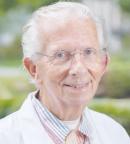
Thomas J. Dougherty, PhD
In 1970, Dr. Dougherty left a lucrative job with the DuPont chemical company to join Roswell Park’s Department of Experimental Biology as a research associate. Here, he developed photodynamic therapy, a cancer treatment that combines laser light with a nontoxic, light-sensitive drug. The process kills cancer cells directly and also shuts down blood vessels in the margin around the tumor, reducing the chance that cancer cells left behind will be able to grow. Studies indicate that it also stimulates the immune system to track down and kill cancer cells throughout the body.
Although photodynamic therapy was first discovered more than a century ago in Germany, until Dr. Dougherty’s breakthrough, researchers had failed to find ways of using light-sensitive compounds to treat disease. Dr. Dougherty successfully treated cancer with photodynamic therapy in preclinical models for the first time in 1975. Three years later, he conducted the first controlled clinical study in humans.
In 1994, the U.S. Food and Drug Administration (FDA) approved photodynamic therapy with the photosensitizer Photofrin (porfimer sodium) for the palliative treatment of advanced esophageal cancer. Today, it is also FDA-approved in the treatment of specific types of lung cancer and Barrett’s esophagus. Roswell Park now offers photodynamic therapy using next-generation photosensitizers and provides off-label treatment of gynecologic malignancies, head and neck cancer and dysplasia, as well as certain skin cancers.
After selling his company, Photofrin Medical Inc, to Johnson & Johnson in 1984, Dr. Dougherty used the proceeds to establish The Oncologic Foundation of Buffalo, which initially funded photodynamic therapy research at Roswell Park. “Tom’s foundation gave me my first grant, which allowed me to begin to investigate the role of photodynamic therapy in antitumor immunity,” recalled Sandra Gollnick, PhD, now Director of Roswell Park’s Photodynamic Therapy Center. “He was a great man, a visionary, and a good friend.”
The foundation later expanded its mission to support initiatives at Canisius College, the American Brain Tumor Association, and Hauptman-Woodward Medical Research Institute. It also funded a program that taught University at Buffalo medical students “how to deal honestly and compassionately with terminally ill patients,” in Dr. Dougherty’s own words.
A graduate of Canisius College, Dr. Dougherty earned his PhD in chemistry from The Ohio State University. He was the recipient of numerous accolades and awards for his work, including the Lifetime Achievement Award from the American Society for Photobiology. He was the author or coauthor of more than 200 publications and held more than 50 patents.
Nancy Oleinick, PhD, Professor Emerita of Radiation Oncology at Case Western Reserve University School of Medicine in Cleveland, remembered Dr. Dougherty as “a superb scientist, a gentleman, a visionary, and a cheerleader for [photodynamic therapy].” Added Dr. Kessel: “Tom certainly left the world a much better place for his being part of it. He was one of the ‘good guys’ of whom there can never be enough.”
Adi Gazdar, MD
The International Association for the Study of Lung Cancer (IASCL) announced the death of Adi Gazdar, MD, of The University of Texas Southwestern Medical Center, Dallas, on December 29, 2018. Dr. Gazdar, a leader in lung cancer pathology, was a cell line pioneer and a groundbreaking pathologist. He is recognized for inspiring a generation of fellow researchers and improving outcomes for countless patients. Dr. Gazdar’s pioneering work with colleagues helped establish the largest collection of human cancer cell lines, which established the foundation for the field as it exists today.
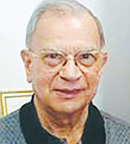
Adi Gazdar, MD
Born in India, Dr. Gazdar received his medical degree from the University of London, Guys Hospital, and performed his residency in pathology at the Peter Bent Brigham Hospital in Boston. He worked at the National Cancer Institute, Navy Medical Oncology Branch, in Bethesda, where he served as a senior scientist and section head for more than 20 years. In 1991 Dr. Gazdar joined his long-time colleague and co-investigator John Minna, MD, at The University of Texas Southwestern Medical Center, where he served at the Simmons Cancer Center and Department of Pathology as the W. Ray Wallace Distinguished Chair in Molecular Oncology Research.
Dr. Gazdar is widely recognized for his work in elucidating the molecular pathogenesis of cancers, primarily lung cancer, both non–small cell and small cell lung cancers. His many discoveries and interests include studying the demographics of EGFR mutations, PIK3CA mutations and copy number changes in human cancers, lung cancer in never-smokers, and the neuroendocrine properties and heterogeneity of small cell lung cancer.
Furthermore, Dr. Gazdar is recognized for the establishment and characterization of more than 400 human tumor cell lines, including lung cancer of all types, but also breast, colon, and ovarian tumors as well as T-cell lymphomas. Dr. Gazdar mentored many lung cancer researchers and provided significant donations to the IASLC Foundation, which funds the research of young investigators. IASLC noted that Dr. Gazdar’s kindness, generosity, humility, and expertise will most certainly be missed, although his legacy will continue.
Editor’s Note: Dr. Gazdar discussed his work with cell lines, how the field of pathology has evolved over time, the integral nature of the patient advocacy community, and his experiences with IASLC, in a video interview filmed during a previous IASLC World Conference on Lung Cancer. To see the video, visit www.youtube.com/watch?v=iTfvlpIG9_s.
Robert O. Hickman, MD
Robert O. Hickman, MD, a pediatric nephrologist and inventor of a catheter that revolutionized care for patients with cancer, died on April 4, 2019. He was 92.
Dr. Hickman was born on September 27, 1926, in Monticello, Utah. He served in the U.S. Air Force in the mid-1940s and married Lucy Jean Whitesides before going on to receive his medical degree from the University of Maryland School of Medicine. He performed his residency training in pediatrics at the University of Washington, Seattle, during which time he was involved in placing the first placement of a child on both long-term hemodialysis and home hemodialysis.
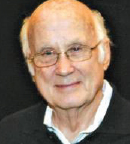
Robert O. Hickman, MD
In the 1970s, Dr. Hickman was a founding member of the transplant team at Fred Hutchinson Cancer Research Center (Fred Hutch) in Seattle that pioneered the bone marrow transplant procedure. The Hickman catheter “was a gift to the world,” said Fred Appelbaum, MD, Executive Vice President and Deputy Director of Fred Hutch, who worked with Dr. Hickman. The device enabled patients with cancer to receive nutrition and chemotherapy intravenously, avoiding the need for repeated needle sticks in an effort to find a vein. “People make contributions in lots of ways,” he said. “Some have deep scientific insights that uncover DNA or how viruses work. Bob’s contribution, from a scientific standpoint, was relatively simple. But his invention saved more suffering, anxiety, and pain than almost anyone I can imagine,” Dr. Appelbaum said.
Dr. Hickman is also remembered by his colleagues for his kindness and compassion, and by his patients for his singular devotion to them, especially the children.
Dr. Hickman is preceded in death by his beloved wife Lucy, his daughter Mary, and his grandchildren Madalyn and Tyler. He is survived by 5 children and their spouses, 17 grandchildren, and 40 great-grandchildren.
Waun Ki Hong, MD, FACP, FASCO
Waun Ki Hong, MD, FACP, FASCO, led numerous clinical trials showing that cisplatin-based chemotherapy and radiotherapy could effectively treat patients with cancer of the larynx while sparing their voice box. This seminal work also served as a model for organ-preservation strategies in many other cancers. Dr. Hong’s many practice-changing contributions improved the lives of countless patients with head and neck cancers and helped pave the way for the current era of biomarker-driven therapies. Dr. Hong died on January 2, 2019. He was 76.

Waun Ki Hong, MD, FACP, FASCO
Dr. Hong was born in a small village on the outskirts of Seoul, South Korea. His early life in the tight-knit rural community was thrown into chaos in 1950, with the outbreak of the Korean War. As an 8-year-old, Dr. Hong recalled North Korean refugees filling the streets near his family home. Shortly before the war, he had another childhood trauma, a near-fatal bout with bacterial peritonitis, which proved fortuitous—the doctors who saved his life inspired his decision to pursue a career in medicine.
Dr. Hong completed his premed work at the Yonsei University College of Engineering and Science in Seoul before entering -Yonsei University School of Medicine, where he received his medical degree in 1967. To fulfill his compulsory national service, Dr. Hong served as a flight surgeon for the Korean Air Force during the Vietnam War, where he cared for wounded soldiers being transported from Vietnam to hospitals in Korea, an experience he described as devastating.
In 1970, Dr. Hong had what he later described as a “golden opportunity” to become a rotating intern at Bronx/Lebanon Hospital in New York. After his training, he moved to the Veterans Affairs (VA) Medical Center in Boston, which would prove career-changing. He told The ASCO Post he saw so many older veterans there with head and neck cancers—diseases with no effective treatments at the time—that it inspired him to pursue a career in oncology.
After completing his residency in 1973, Dr. Hong was accepted into a medical oncology fellowship at Memorial Sloan Kettering Cancer Center in New York, another valuable step in his maturing career. Following his fellowship, he returned to the Boston VA Medical Center, serving as Chief of Medical Oncology.
“It was an incredibly rewarding time. I was the only trained medical oncologist, and not only did I have to care for many patients, but I also taught medical students who wanted to pursue a career in oncology as well as the Center’s house staff,” Dr. Hong said in an interview.
The Boston VA was where Dr. Hong conducted his research in combination therapies that would prove to be a less invasive way to treat laryngeal cancers, sparing patients their voice box. In 1991, he and coauthor Gregory Wolf, MD, published their findings in TheNew England Journal of Medicine, launching a practice-changing paradigm in organ-preservation therapies.
Largely due to his pioneering work in head and neck cancer, The University of Texas MD Anderson Cancer Center in Houston offered Dr. Hong a position as Chief of the Section of Head and Neck Oncology, where he centered his priorities on translational research. He also continued his chemoprevention research, leading the National Cancer Institute’s P01 Program Project: Biology and Chemoprevention of Head and Neck Cancer.
Dr. Hong’s long career at MD Anderson was highlighted by numerous clinical and research achievements that improved outcomes, reduced therapy-induced morbidities, and improved quality of life for patients with cancer. In 2001, Dr. Hong became Head of the Division of Cancer Medicine at MD Anderson, and he continued in that role until his retirement in 2014.
During that period, he reveled in his teaching and mentoring activities, which he felt were vital to keeping the field moving forward.Dr. Hong was proud of his heritage, giving back by way of training more than 60 young oncology fellows from Korea, with about 20 of them now serving as chairs or directors of cancer centers in Korea.
Dr. Hong as a long-time active member of ASCO, serving on the Board of Directors from 2006 to 2009, as Chair of the Conquer Cancer Grants Selection Committee, and as a member of the Cancer Education Committee, among other activities. In 2000, he received ASCO’s David A. Karnofsky Award and Lecture, and in 2016, he was presented with ASCO’s Special Recognition Award.
He was a Past President of the American Association of Cancer Research (AACR) and is the namesake for the AACR Waun Ki Hong Award for Outstanding Achievement in Translational and Clinical Cancer Research given to young investigators. Over the course of his career, Dr. Hong also held a number of high-level advisory positions related to public health policy.
His many colleagues in the oncology community remember Dr. Hong as an enthusiastic and committed leader who put compassionate care above all else. He told The ASCO Post, “To this day, I get e-mails from laryngeal cancer survivors, thanking me.” There is perhaps no greater tribute for an oncologist than heartfelt thanks from patients.
Francesco Lo Coco, MD
Hematologist Francesco Lo Coco, MD, known for his research accomplishments in both acute myeloid leukemia (AML) and acute promyelocytic leukemia (APL), died in Rome on March 3, 2019. He was 63.
After graduating from the Medical School in Pisa, he moved to La Sapienza University of Rome in 1981. From 1992 to 1994, Dr. Lo Coco was a visiting researcher at the Institute for Cancer Genetics of Columbia University in New York. After returning to Italy in 1994, he collaborated with colleagues around the world in researching the molecular characterization of promyelocytic leukemia, which provided the basis for the modern treatment of this hematologic malignancy. In fact, Dr. Lo Coco was among the leaders who successfully initiated the treatment of APL with arsenic trioxide combined with retinoic acid.
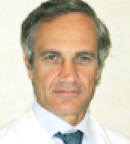
Francesco Lo Coco, MD
Since 2005, he was Professor of Hematology at Tor Vergata University in Rome and led the oncologic hematology laboratory there. Over the years, Dr. Lo Coco held various positions in several scientific societies and research organizations, including the Italian Society of Experimental Hematology (EHA; President 2000–2002), the American Society of Hematology, the Italian Ministry of Health, and the European Hematology Association (Chairman, Education Committee 2008–2013). He also served on the editorial boards of the Journal of Clinical Oncology, Leukemia, and Haematologica.
Among the many national and international awards received by Dr. Lo Coco during his career was the José Carreras award in 2018. This award was granted by the European Hematology Association for outstanding contributions to research and treatment of AML.
“In addition to being an outstanding hematologist, and clinical and innovative investigator, Frances Lo Coco was a warm personality and a great friend,” shared Pieter Sonneveld, MD, PhD, EHA President. “It was an honor and pleasure to work with him. We will miss him sorely.”
William Arcese, MD, Professor of Hematology, Tor Vergata University and Director of the Stem Cell Transplant Unit and Rome Transplant Network, offered these comments on the passing of Dr. Lo Coco: “Persons like Francesco Lo Coco are rare to meet in life, and this awareness makes his loss hardest to bear.”
John Mendelsohn, MD
John Mendelsohn, MD, President Emeritus of The University of Texas MD Anderson Cancer Center, died of glioblastoma on January 7, 2019, at his home in Houston at age 82. He was an internationally acclaimed leader in the field of medicine and scientist whose research helped pioneer a new type of cancer therapy. Dr. Mendelsohn was the third president of MD Anderson, serving in that capacity from 1996 to 2011.
“MD Anderson had the great fortune of being led by John Mendelsohn for 15 years, and the strides made under his direction were nothing short of remarkable,” said Peter W.T. Pisters, MD, President of MD Anderson.
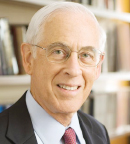
John Mendelsohn, MD
“John was always a great supporter of young investigators. As with so many others of my generation, he provided me with opportunity coupled with advice and counsel, always with a twinkle in his eye! His influence on the careers of so many of us and, in turn, his impact on so many thousands of patients over the years through his own remarkable scientific contributions, cannot be overstated. He will be missed and he will be remembered,” said ASCO Chief Executive Officer Clifford A. Hudis, MD, FACP, FASCO.
Dr. Mendelsohn was born in Cincinnati on August 31, 1936. He earned his Bachelor’s Degree in Biochemical Sciences magna cum laude from Harvard College in 1958. Between college and medical school, Dr. Mendelsohn spent a year in Scotland as a Fulbright Scholar at the University of Glasgow. He graduated cum laude from Harvard Medical School in 1963. He performed his residency training in internal medicine at Brigham and Women’s Hospital in Boston; then he completed a research fellowship at the National Institutes of Health and a fellowship in hematology-oncology at Washington University Medical School in St. Louis.
Dr. Mendelsohn joined the newly established University of California, San Diego (UCSD), School of Medicine faculty in 1970, where he became the Founding Director of the UCSD Cancer Center. In 1985, Dr. Mendelsohn left UCSD to become Chair of the Department of Medicine at Memorial Sloan Kettering Cancer Center (MSK), where he held the Winthrop Rockefeller Chair in Medical Oncology. During his tenure at MSK, he was Co-Head of the Program in Molecular Pharmacology and Therapeutics as well as Professor and Vice Chair of Medicine at Cornell Weill Medical College. In 1996, he left MSK to become President of MD Anderson.
After joining MD Anderson, Dr. Mendelsohn immediately strengthened the institution’s focus on research-driven patient care, building a strong research program that emphasized the translation of scientific findings to improve patient care and prevention strategies. Under his leadership, MD Anderson consistently received research grants from the National Cancer Institute and conducted therapeutic clinical trials to evaluate new treatments. MD Anderson also established research partnerships and formed teaching affiliations with institutions in Europe, the Middle East, Asia, and South America.
When Dr. Mendelsohn took over as President, he toured the facility, yellow pad in hand, asking employees what they needed to excel in their work and tracking the patient experience from the first phone call through the end of treatment. Innovations in care were both cultural and functional. He reorganized care around the patient rather than the department, enhancing collaboration with cross-functional teams. He engaged employees in building a powerful culture around core values of caring, integrity, and discovery as well as inspired all with the powerful tagline of “Making Cancer History.”
During Dr. Mendelsohn’s tenure, MD Anderson’s revenue increased from $726 million to $3.1 billion, and its facilities grew from 3.4 million sq. ft. to 15.2 million sq. ft. One of his major achievements was planning The University of Texas Research Park, south of MD Anderson’s main campus, and launching the Red and Charline McCombs Institute for the Early Detection and Treatment of Cancer there. Each center was built so that basic and clinical researchers from multiple departments and different disciplines could collaborate more effectively.
Dr. Mendelsohn inspired significant achievements in research and patient care and directed substantial growth in staff, programs, facilities, and philanthropy. During each of his last 5 years as President, MD Anderson was named the top cancer hospital in the “Best Hospitals” survey published annually by U.S. News & World Report. He retired from MD Anderson on his birthday in the summer of 2018.
“Dr. Mendelsohn was an outstanding leader, mentor, and team builder, and I feel fortunate to have worked so closely with him to advance the work of the Institute for Personalized Cancer Therapy [IPCT],” said Funda Meric-Bernstam, MD, Medical Director of the IPCT. “Together, with our team, we built one of the top precision oncology programs in the world, so patients could be matched with optimal therapies. Dr. Mendelsohn was the consummate physician-scientist who always thought about how we could better impact patient outcomes.”
In recognition of his outstanding academic achievements, Dr. Mendelsohn was elected to several prestigious organizations, including the Health and Medicine Division of the National Academies of Sciences (formerly the Institute of Medicine) and the Academy of Arts and Sciences. He also received numerous awards for his scientific work, including the 2018 Tang Prize in Biopharmaceutical Science. ASCO honored Dr. Mendelsohn for his significant contributions to oncology with the 2002 David A. Karnofsky Award and Lecture and the 2018 Distinguished Achievement Award.
“John was an inspirational leader, an innovative scientist, a dedicated mentor, and a great friend. He was the personification of ‘class act’ in every way,” said ASCO Chief Medical Officer Richard L. Schilsky, MD, FACP, FSCT, FASCO.
Reading deeply in humanist, Jewish, Quaker, and Unitarian thought, Dr. Mendelsohn was a firm believer in free will and the ability of individuals to shape not only their path in life, but also their values and personality. “I have willfully incorporated ways of approaching life’s challenges and opportunities into myself that I selected from role models,” Dr. Mendelsohn wrote in his memoirs. He believed that each of us “has a role in healing the world.” He felt called by the biblical injunction “Go forth and be a blessing,” to offer comfort, kindness, support, inspiration, and grace.
Dr. Mendelsohn believed success in applying science to human health comes through collaboration, bridging worlds from basic science to business, governmental organizations, health institutions, and philanthropic groups. He was renowned for his ability to create caring bonds with colleagues, friends, staff, and patients and to treat all people he touched with dignity and respect. His life’s work was as much about this as about science. He lived his life according to two principles: Live each day looking forward with the greatest hope and looking back with the least regret, and the last two words in the book Howards End by E. M. Forster: “Only connect!”
Alan S. Rabson, MD
Many in the cancer research and National Institutes of Health (NIH) community are mourning the loss of long-time National Cancer Institute (NCI) senior leader Alan S. Rabson, MD, who died on July 4 at the age of 92.
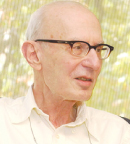
Alan S. Rabson, MD
With a distinguished scientific career that spanned 6 decades and included research on tumor virology and cancer pathology as well as senior leadership roles at NCI, Dr. Rabson was highly respected at NIH and well beyond. Honored time and again for his commitment to science and to advancing cancer research, Dr. Rabson was equally known for treating everybody he encountered—whether a member of Congress, a young researcher in training, or a patient needing advice—with kindness and respect.
“There have been few people like Alan Rabson,” said NCI Director Norman Sharpless, MD. “The stories of his remarkable history at NCI, his immense dedication to his work, and his love for his family are truly inspiring. It is no overstatement to say that we have lost a giant.”
Dr. Rabson’s wife of 59 years, Ruth Kirschstein, MD, also was a highly respected and accomplished scientist at NIH. Dr. Kirschstein, who died in 2009, helped organize the research response to the AIDS epidemic and was the first woman to direct an NIH institute, leading the National Institute of General Medical Sciences for 2 decades.
The couple were known for their deep devotion to NIH and each other. In a 1998 interview, Dr. Rabson recounted: “I started [at NIH] by finishing my last year of pathology training at the Clinical Center. My wife and I liked the place so much that we stayed here for the next 42 years.”
Born in Brooklyn in 1926, Dr. Rabson spent his first 2 decades mostly in New York, completing his undergraduate degree at the University of Rochester and his medical degree at the State University of New York.
Remarkably, Dr. Rabson’s first attempt to come to NCI was unsuccessful. Still in medical school, he applied to spend the summer at the institute working for well-known NCI biochemist Jesse Greenstein, PhD. However, it was not to be. Washington, DC, was simply too hot in the summer and there was no air conditioning at the NIH, the eminent scientist explained in response to the young medical student’s request, so he usually worked in Berkeley, California, during those months.
During the Korean War, Dr. Rabson joined the Public Health Service’s Commissioned Corps, studying virology, at the Communicable Disease Center (now known as the Centers for Disease Control and Prevention) and the University of Michigan, and pathology, at the U.S. Public Health Service Hospital in New Orleans.
He finally arrived at the NIH in 1955, as a pathology anatomy resident. Dr. Rabson’s career at NCI began not long after, when he was recruited to study tumor-causing viruses and to serve as a staff member in NCI’s pathology department at the NIH Clinical Center.
For many years, the NCI Laboratory of Pathology performed the pathology for most of the NIH institutes conducting research at the Clinical Center. The mindset that Dr. Rabson and his colleagues had toward the many people who participated in Clinical Center studies was simple. He said, “We owed them the very, very best we could give them.”
Dr. Rabson was also legendary in his willingness to help people facing a cancer diagnosis to find the best options for their care, said former NIH Director Francis Collins, MD, PhD. Whether it was a member of Congress or a young mother from the heartland, Dr. Collins recalled, Dr. Rabson always took the time to understand the situation, build a relationship with the patient and family, and help them sift through a myriad of possible clinical trials.
“Every year since 2012, the NIH Director’s Award ceremony has included the Alan S. Rabson Award for Clinical Care,” Dr. Collins said. “It goes to a deserving employee who demonstrates an exceptional commitment to assisting patients and their families who look to the NIH for help. Al’s half-century of service stands as the epitome of personal dedication to patient care at the National Institutes of Health.”
After 20 years in the pathology department, Dr. Rabson was named Director of the forerunner to what is now NCI’s Division of Cancer Biology. During that time, he oversaw the division’s transition from an intramural research group that performed its own research to one that also managed the funding of cancer research performed by NCI-supported investigators at institutions across the country.
The final stage of Dr. Rabson’s distinguished career at NCI began in 1995, when he was named Deputy Director of the institute by then NCI Director Richard Klausner, MD. “He came down to my office on the third floor and said, ‘Would you be willing to be my deputy?’ And I said, ‘I can’t think of anything nicer,’” Dr. Rabson recounted.
Over the following several decades, he was asked by each new director to continue on in the deputy director role. Current NCI Deputy Director Doug Lowy, MD, described Dr. Rabson’s invaluable service as a sounding board for each director and other NCI leaders on decisions both small and large as among his most important duties.
“He had an inimitable leadership style,” Dr. Lowy said. “When you talked with him, he spent most of the time trying to understand what you needed, so he could help you, rather than spending it figuring out how you could help him. He truly believed that if you were successful, he was successful.”
Dr. Rabson held clinical professorships at George Washington University and Georgetown University and received multiple awards from the Public Health Service for his clinical work and scientific contributions. He officially retired from federal service in 2015. That same year, he was named a Scientist Emeritus at the NCI.
This article was originally published on the National Cancer Institute website at https://www.cancer.gov/news-events/cancer-currents-blog/2018/alan--rabson-passes-away.
J. Evan Sadler, MD, PhD
Pioneering hematologist J. Evan Sadler, MD, PhD, an expert in the study and treatment of blood-clotting disorders, died December 13, 2018, at his home in Clayton, Missouri, following a brief illness. He was 67. His death was announced in a news item from the Washington University School of Medicine in St. Louis, where Dr. Sadler served as Director of the Division of Hematology and the Ira M. Lang Professor of Medicine. Dr. Sadler was also Professor of Biochemistry and Molecular Biophysics.

J. Evan Sadler, MD, PhD
Dr. Sadler, who has served on the Washington University faculty for 34 years, pioneered the study of several blood coagulation factors. In particular, his contributions have been critical to the molecular, genetic, and biochemical characterization of von Willebrand factor and ADAMTS13, two proteins associated with bleeding and clotting disorders.
His laboratory identified the molecular basis for a range of subtypes of the bleeding disorder von Willebrand disease, which has led to improved diagnosis and therapy. In addition, his complementary studies of the structure and function of ADAMTS13 have important implications for understanding the pathophysiology of the rare clotting disorder thrombotic thrombocytopenic purpura. The molecular understanding of these diseases enabled Dr. Sadler to lead efforts to develop existing clinical guidelines for the diagnosis and treatment of von Willebrand disease and thrombocytopenic purpura.
“Evan had exceptional strengths as a division chief, physician-scientist, mentor, and clinician,” said Victoria J. Fraser, MD, the Adolphus Busch Professor of Medicine and Head of the Department of Medicine. “He was well recognized as a critical thinker who was incredibly curious and deeply focused on answering the most difficult mechanistic questions related to hemostasis. His expertise in biochemistry was widely recognized locally, nationally, and internationally.”
Dr. Sadler joined the faculty of Washington University in 1984 and remained there his entire career. A longtime Howard Hughes Medical Institute investigator, he was named Director of the Division of Hematology in 2009 and was installed as the Ira M. Lang Professor of Medicine in 2014.
Dr. Sadler received numerous awards and honors recognizing his outstanding contributions to the field of hematology. He was especially known for his pioneering research and his dedication to mentorship, including serving as a mentor to nearly 100 graduate students and postdoctoral fellows, many of whom have gone on to become leaders in the field. The American Society of Hematology (ASH) recently recognized his exceptional years of service and dedication to the Society and to hematology with the 2018 Exemplary Service Award. His outstanding contributions to hematology over his entire career were recognized when Dr. Sadler received ASH’s Henry M. Stratton Medal for Basic Science in 2016 and the Society’s William Dameshek Prize in 1998.
“Evan was a brilliant scientist who was among the first to apply the tools of recombinant DNA technology to the field of blood coagulation,” said Stuart Kornfeld, MD, the David C. and Betty Farrell Professor of Medicine. “This, combined with the high quality and great depth of his studies, propelled him to the top of his field. On a personal level, I have never met a more humble and fair-minded individual who was always striving for excellence. Evan was the perfect role model for the physician-scientist pathway.”
Dr. Sadler earned a Bachelor of Science Degree in Chemistry from Princeton University in 1973. He continued his studies at Duke University, where he earned a Doctorate in Biochemistry in 1978 and a medical degree in 1979. After a postgraduate internship at Duke, Dr. Sadler completed his fellowship training at the University of Washington, Seattle.
Jaclyn (Jacki) Silverman
Jaclyn Silverman passed away on April 24, 2019, at the age of 94. The Board of Trustees and staff [of The Chemotherapy Foundation] mourn, with deepest sorrow, the passing of a colleague and friend. For 33 years, Jacki was Conference Management Director of the Chemotherapy Foundation’s Annual Symposium, which focused on the practical care of patients with cancer. Jacki’s role was fundamental in building its attendance over the years, reaching a national/international audience
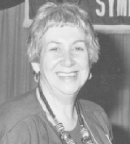
Jaclyn Silverman
of close to 2,000 in 2014. Partnering with the Page & William Black Post-Graduate School of the Icahn School of Medicine at Mount Sinai providing Continuing Medical Education credits, the Symposium became one of the outstanding events on the professional calendar. With Symposium management transitioned to Physicians’ Education Resource in 2015, Jacki’s participation continued as event ambassador, maintaining the personal touch with program presenters and longtime attendees. Jacki never did less than a phenomenal job and will be remembered always with love and admiration by those who worked with her.
—Franco M. Muggia, MD, Chairman and Medical Director,
Michael G. Rosenberg, President and CEO,
The Chemotherapy Foundation
David J. Sugarbaker, MD
David J. Sugarbaker, MD, was an internationally recognized thoracic surgeon who specialized in the treatment of mesothelioma and complex thoracic cancers. To be recognized as first in a medical finding or procedure is a rare honor; Dr. Sugarbaker received that honor twice, being the first to develop a multimodality therapy for mesothelioma and the first to complete a lung transplant in Massachusetts. Dr. Sugarbaker died on August 29, 2018. He was 65.

David J. Sugarbaker, MD
Dr. Sugarbaker was born on August 5, 1953, 1 of 10 children who lived on an apple orchard on the outskirts of Jefferson City, Missouri. His father was a cancer surgeon, and his mother was a nurse. His father, who had worked at the National Cancer Institute, ran his own small cancer clinic.
When Dr. Sugarbaker was 13 years old, he began working in the research laboratory that his father had constructed in the family’s garage. “It was my job to tend to the rats and keep the tumor lines going,” he recalled in 2014, when serving as the 94th President of the American Association for Thoracic Surgeons. Along with his work in the lab, Dr. Sugarbaker also assisted his father during operations and doing follow-up visits to postoperative patients. These rich medical experiences at an early age had a profound influence on his life’s view and decision to become a thoracic cancer surgeon.
In 1975, Dr. Sugarbaker entered Cornell University Medical School, receiving his medical degree in 1979 and marrying his longtime girlfriend, Linda, shortly before beginning his surgical internship. He did his surgical residency at Brigham and Women’s Hospital in Boston, after which he relocated to Canada, doing a residency in cardiothoracic surgery at Toronto General Hospital, where he served as Chief Resident. While retaining his position at Toronto General, he would later also become a resident in pediatric cardiac surgery at The Hospital for Sick Children in Toronto.
After completing his residency training, Dr. Sugarbaker returned to the United States, where he was appointed Chief in the Division of Cardiothoracic Surgery at Brigham and Women’s Hospital. It was there when his career path was set, as he focused mainly on pleural mesothelioma, the disease for which he would cement his legacy. In 1989, he founded and built the first noncardiac division of thoracic surgery in the United States. Under his leadership, the division of thoracic surgery grew quickly, from 1 to about 13 surgeons performing over 3,000 difficult cases annually.
A year later, Dr. Sugarbaker led a team of surgeons in performing the first-ever lung transplant in the state of Massachusetts. This would prove an incredibly vibrant time in his career. In addition to his position at Brigham and Women’s Hospital, Dr. Sugarbaker became Professor of Surgery at Harvard Medical School, where he founded the International Mesothelioma Program; its central goal was to find a cure. Not surprisingly, under Dr. Sugarbaker’s leadership, this program also became the largest of its kind in the nation, attracting patients from across the globe.
In 2014, Dr. Sugarbaker followed an opportunity to the Texas Medical Center, where he founded the new Division of General Thoracic Surgery, the Lung Institute, which integrates medical and surgical treatments for benign and malignant noncardiac thoracic diseases. During this highly active period, he also founded the Mesothelioma Treatment Center.
Dr. Sugarbaker refined his surgical techniques over time and these were emulated worldwide. He also developed methods to perform intraoperative heated chemotherapy and conducted novel clinical trials to establish the appropriate intraoperative agents to be used.
In 2013, he received The Henry D. Chadwick Medal, the highest honor awarded by the Massachusetts Pulmonary Section of the American Lung Association of the Northeast’s Medical and Scientific Branch for meritorious contributions in the study and treatment of thoracic disease.
Upon Dr. Sugarbaker’s death, remembrances of the great doctor poured in. Among them was one from Jacques Fontaine, MD, a thoracic surgeon who trained under Dr. Sugarbaker: “His legacy will endure through the accomplishments of all the prominent thoracic surgeons he has trained. He is the mentor of mentors. His vision, focus, and dedication to advancing the treatment of mesothelioma have influenced an entire generation of thoracic surgeons.” Dr. Sugarbaker is survived by his wife and six children, and several siblings including Dr. Paul Sugarbaker of Washington, DC, who is also a leading surgeon in treating mesothelioma.
Moody Wharam, Jr, MD
Moody Wharam, Jr, MD, Professor Emeritus of Radiation Oncology and Molecular Radiation Sciences and former Willard and Lillian Hackerman Professor of Radiation Oncology at the Johns Hopkins Kimmel Cancer Center, died on August 10 at the age of 77.
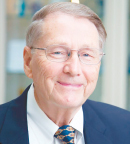
Moody Wharam, Jr, MD
Dr. Wharam specialized in the treatment of children with cancer, and in his more than 40 years at Johns Hopkins, he ushered in many firsts. From 1980 to 1990, he served as the first chairman of the radiation oncology committee of the Pediatric Oncology Group. Dr. Wharam had the unique distinction and honor of being named to four study groups appointed by the National Cancer Institute to investigate common childhood cancers. His work led to dramatic increases in pediatric cancer survival rates.
“For literally thousands of our own pediatric oncology patients and in nationally and internationally impactful clinical trials in childhood cancers, Dr. Moody Wharam served for decades as a rock of unswerving clinical excellence, caring, and progress,” says Curt Civin, MD, Associate Dean for Research at the University of Maryland School of Medicine and former Director of Pediatric Oncology at the Johns Hopkins Kimmel Cancer Center. “He played a major role in delivering and developing better cures for children with cancers.”
At the time when few were willing to take on the challenge, Dr. Wharam led research to scale back treatment for many childhood cancers to prevent toxicities that caused second cancers decades later, damage to growing bones and organs, and impairments to learning and other cognitive brain functions. Dr. Wharam co-led a groundbreaking study of treatment reduction in Hodgkin lymphoma, which led to refinements in therapy. He also developed the standard of care for the childhood cancer rhabdomyosarcoma, combining chemotherapy and radiation therapy, a treatment so effective it remains the standard today.
In the early 1990s, years before advanced radiosurgery equipment had been developed, Dr. Wharam innovated a way to deliver radiation very precisely to preserve vision for a toddler diagnosed with cancer in both eyes.
“Dr. Wharam was the consummate Hopkins physician and clinical researcher. He believed that a focus on improving the lives of children with cancer requires absolute attention to detail; a drive to understand what and how to improve care through research; and a kind, compassionate, and caring touch with children and their parents. He was a master of each of these. In fact, children diagnosed with sarcomas, to this day, still directly benefit from his life’s work,” says Theodore DeWeese, MD, Director of Radiation Oncology and Molecular Radiation Sciences, who was recruited to Johns Hopkins by Dr. Wharam. “My life and the lives of so many other former trainees have been made so much richer and better because of our relationship with Moody Wharam.”
Dr. Wharam joined the Johns Hopkins faculty in 1975, the second person recruited to the Kimmel Cancer Center’s radiation oncology program. He helped oversee the planning and outfitting of the radiation oncology facilities for the new cancer center, which opened in 1977 as one of the first academic programs in radiation oncology in the country. He also oversaw two expansions to radiation oncology, with the opening of the Kimmel Cancer Center’s Harry and Jeanette Weinberg Building and a satellite facility in Lutherville, Maryland.
In 1990, Dr. Wharam was named Acting Director of the Division of Radiation Oncology, and from 1994 to 2000, he served as Director. Upon Dr. Wharam’s retirement in December 2016, Dr. DeWeese initiated a campaign to establish the Moody Wharam Professorship to honor his unparalleled contribution to the field of radiation oncology.
Before coming to Johns Hopkins, Dr. Wharam earned his Bachelor of Economics degree at Harvard University in 1963 and then served as a shipboard officer in the U.S. Navy Atlantic Fleet from 1963 to 1965. He earned his medical degree at the University of Virginia in 1969 and served an internship in medicine and pediatrics at Georgetown University Medical Center. From 1970 to 1973, Dr. Wharam held a National Institutes of Health fellowship in radiation therapy at the University of California Medical Center, San Francisco, and held a faculty position at Duke University Medical School.
Dr. Wharam was a member of the International Society of Pediatric Oncology, the Children’s Oncology Group, and a fellow of both the American College of Radiology and the American Society for Radiation Oncology. ■

